elemintalshop
Teotihuacán Pyramid of Sun, Popocatépetl and Iztaccíhuatl Volcanoes & Eagle with Snake 20 Centavos Mexico Authentic Coin Money for Jewelry
Teotihuacán Pyramid of Sun, Popocatépetl and Iztaccíhuatl Volcanoes & Eagle with Snake 20 Centavos Mexico Authentic Coin Money for Jewelry
Couldn't load pickup availability
Teotihuacán Pyramid of the Sun, Popocatépetl and Iztaccíhuatl Volcanoes & Eagle with Snake 20 Centavos Mexico Authentic Coin Money for Jewelry and Craft Making (Phrygian Liberty Cap)
Reverse: The Pyramid of the Sun in the center of the landscape, along with volcanoes and flora is under the sun, which divides the denomination and is above the mintmark. The location of the pyramid, Teotihuacán, is written at the pyramid's base. The volcanoes Popocatépetl and Iztaccíhuatl are in the background. The value is at the top with the radiant Phrygian Liberty Cap in between.
Lettering: 20 LIBERTAD
TEOTIHUACÁN
CENTAVOS
Translation: 20 Liberty
Teotihuacán
Cents
Obverse: The Mexican coat of arms with the bigger emblem at the top, supported at the bottom by a wreath and an eagle facing left
Lettering: ESTADOS UNIDOS MEXICANOS
Translation: United Mexican States
Features
Issuer Mexico
Period United Mexican States (1905-date)
Type Standard circulation coin
Years 1955-1971
Value 20 Centavos (0.20 MXP)
Currency Peso (1863-1992)
Composition Bronze
Weight 9.9 g
Diameter 28.5 mm
Thickness 2.14 mm
Shape Round
Orientation Coin alignment ↑↓
Demonetized Yes
Number N# 959
References KM# 440, Schön# 51
Wikipedia:
Teotihuacan /teɪˌoʊtiːwəˈkɑːn/ is an ancient Mesoamerican city located in a sub-valley of the Valley of Mexico, which is located in the State of Mexico, 40 kilometers (25 mi) northeast of modern-day Mexico City. Teotihuacan is known today as the site of many of the most architecturally significant Mesoamerican pyramids built in the pre-Columbian Americas. At its zenith, perhaps in the first half of the first millennium (1 AD to 500 AD), Teotihuacan was the largest city in the pre-Columbian Americas, with a population estimated at 125,000 or more, making it at least the sixth-largest city in the world during its epoch.
The city covered eight square miles (21 km2); 80 to 90 percent of the total population of the valley resided in Teotihuacan. Apart from the pyramids, Teotihuacan is also anthropologically significant for its complex, multi-family residential compounds, the Avenue of the Dead, and its vibrant, well-preserved murals. Additionally, Teotihuacan exported fine obsidian tools that are found throughout Mesoamerica. The city is thought to have been established around 100 BC, with major monuments continuously under construction until about 250 AD. The city may have lasted until sometime between the 7th and 8th centuries AD, but its major monuments were sacked and systematically burned around 550 AD. Its collapse might be related to the extreme weather events of 535–536.
Teotihuacan began as a religious center in the Mexican Highlands around the first century AD. It became the largest and most populated center in the pre-Columbian Americas. Teotihuacan was home to multi-floor apartment compounds built to accommodate the large population. The term Teotihuacan (or Teotihuacano) is also used for the whole civilization and cultural complex associated with the site.
Although it is a subject of debate whether Teotihuacan was the center of a state empire, its influence throughout Mesoamerica is well documented; evidence of Teotihuacano presence can be seen at numerous sites in Veracruz and the Maya region. The later Aztecs saw these magnificent ruins and claimed a common ancestry with the Teotihuacanos, modifying and adopting aspects of their culture. The ethnicity of the inhabitants of Teotihuacan is the subject of debate. Possible candidates are the Nahua, Otomi, or Totonac ethnic groups. Scholars have suggested that Teotihuacan was a multi-ethnic state since they find cultural aspects connected to the Maya as well as Oto-Pamean people. After the collapse of Teotihuacan, central Mexico was dominated by more regional powers, notably Xochicalco and Tula.
The city and the archeological site are located in what is now the San Juan Teotihuacán municipality in the State of México, approximately 40 kilometers (25 mi) northeast of Mexico City. The site covers a total surface area of 83 square kilometers (32 sq mi) and was designated a UNESCO World Heritage Site in 1987.[5] It is the most visited archeological site in Mexico, receiving 4,185,017 visitors in 2017.
*********
The Pyramid of the Sun, largest pyramid in Teotihuacan, that was built about 100 CE. The pyramid rises 216 feet (66 metres) above ground level, and it measures approximately 720 by 760 feet (220 by 230 metres) at its base. It was constructed of about 1,000,000 cubic yards (765,000 cubic metres) of material, including hewed tezontle, a red coarse volcanic rock of the region.
********
Wikipedia:
Popocatépetl and Iztaccíhuatl refers to the volcanoes Popocatépetl ("the Smoking Mountain") and Iztaccíhuatl ("white woman" in Nahuatl, sometimes called the Mujer Dormida "sleeping woman" in Spanish) in Iztaccíhuatl–Popocatépetl National Park, which overlook the Valley of Mexico and the various myths explaining their existence. The most common variety relates the Nahua romance of the princess Iztaccíhuatl and the warrior Popocatépetl. This tale is recorded in several different versions.
******
The Phrygian cap (/ˈfrɪdʒ(iː)ən/) or liberty cap is a soft conical cap with the apex bent over, associated in antiquity with several peoples in Eastern Europe and Anatolia, including the Balkans, Dacia, Thrace and Phrygia, where the name originated.
Although Phrygian caps did not originally function as liberty caps, they came to signify freedom and the pursuit of liberty first in the American Revolution and then in the French Revolution. The original cap of liberty was the Roman pileus, the felt cap of emancipated slaves of ancient Rome, which was an attribute of Libertas, the Roman goddess of liberty. In the 16th century, the Roman iconography of liberty was revived in emblem books and numismatic handbooks where the figure of Libertas is usually depicted with a pileus. The most extensive use of a headgear as a symbol of freedom in the first two centuries after the revival of the Roman iconography was made in the Netherlands, where the cap of liberty was adopted in the form of a contemporary hat. In the 18th century, the traditional liberty cap was widely used in English prints, and from 1789 also in French prints; by the early 1790s, it was regularly used in the Phrygian form.
It is used in the coat of arms of certain republics or of republican state institutions in the place where otherwise a crown would be used (in the heraldry of monarchies). It thus came to be identified as a symbol of republican government. A number of national personifications, in particular France's Marianne, are commonly depicted wearing the Phrygian cap.
********
Wikipedia:
The coat of arms of Mexico (Spanish: Escudo Nacional de México, literally "national shield of Mexico") depicts a Mexican (golden) eagle perched on a prickly pear cactus devouring a rattlesnake. The design is rooted in the legend that the Aztec people would know where to build their city once they saw an eagle eating a snake on top of a lake. The image has been an important symbol of Mexican politics and culture for centuries. To the people of Tenochtitlan, this symbol had strong religious connotations, and to the Europeans, it came to symbolize the triumph of good over evil (with the snake sometimes representative of the serpent in the Garden of Eden).
The Law on the National Arms, Flag, and Anthem regulates the design and use of the arms. They feature in the centre of the flag of Mexico, are engraved on the obverse of Mexican peso coins, and are the basis of the Seal of the United Mexican States, the seal used on any official documents issued by the federal, state or municipal governmental authorities. The seal differs from the arms by the addition of the words Estados Unidos Mexicanos ("United Mexican States", the full official name of the country) in a semicircle around the upper half.
Share
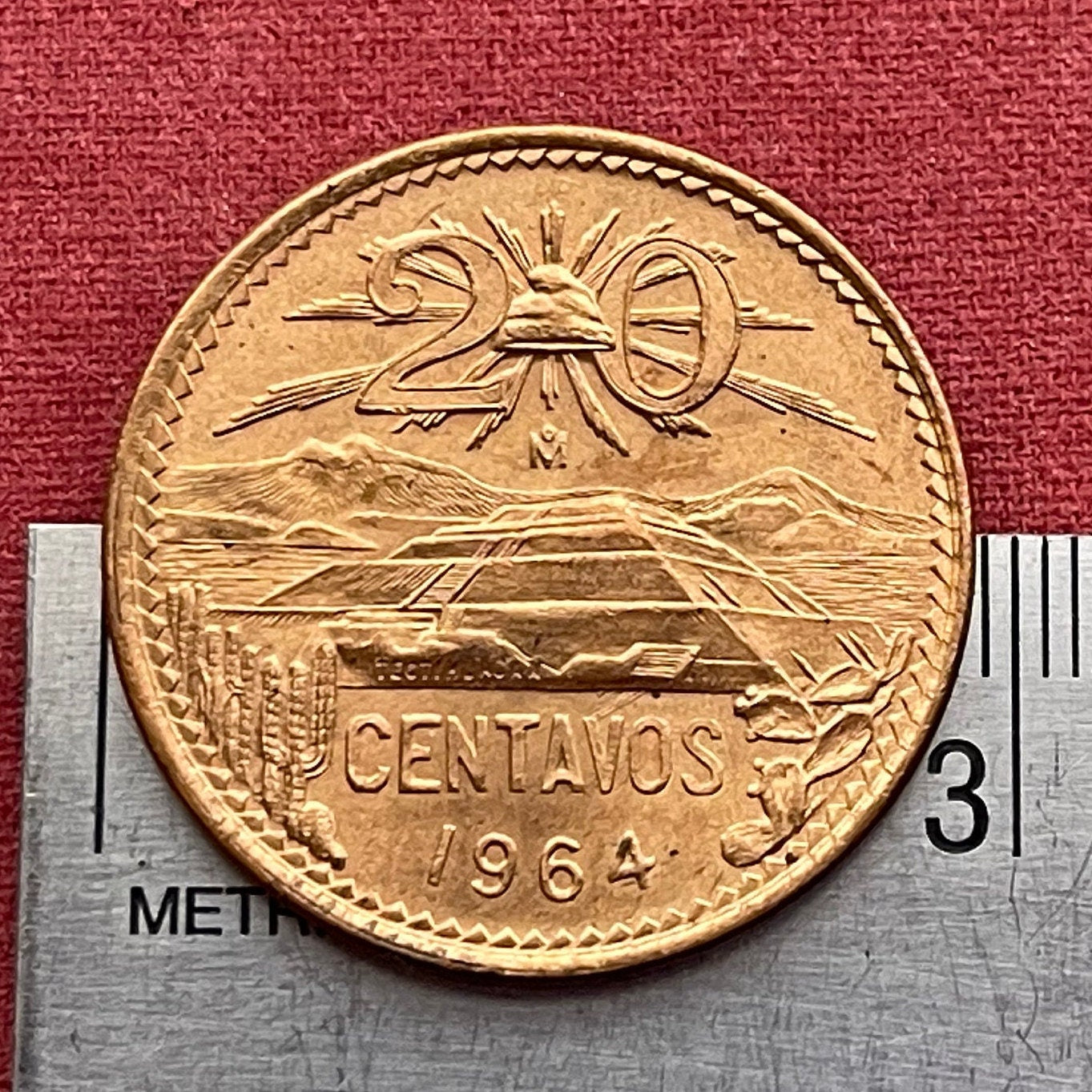
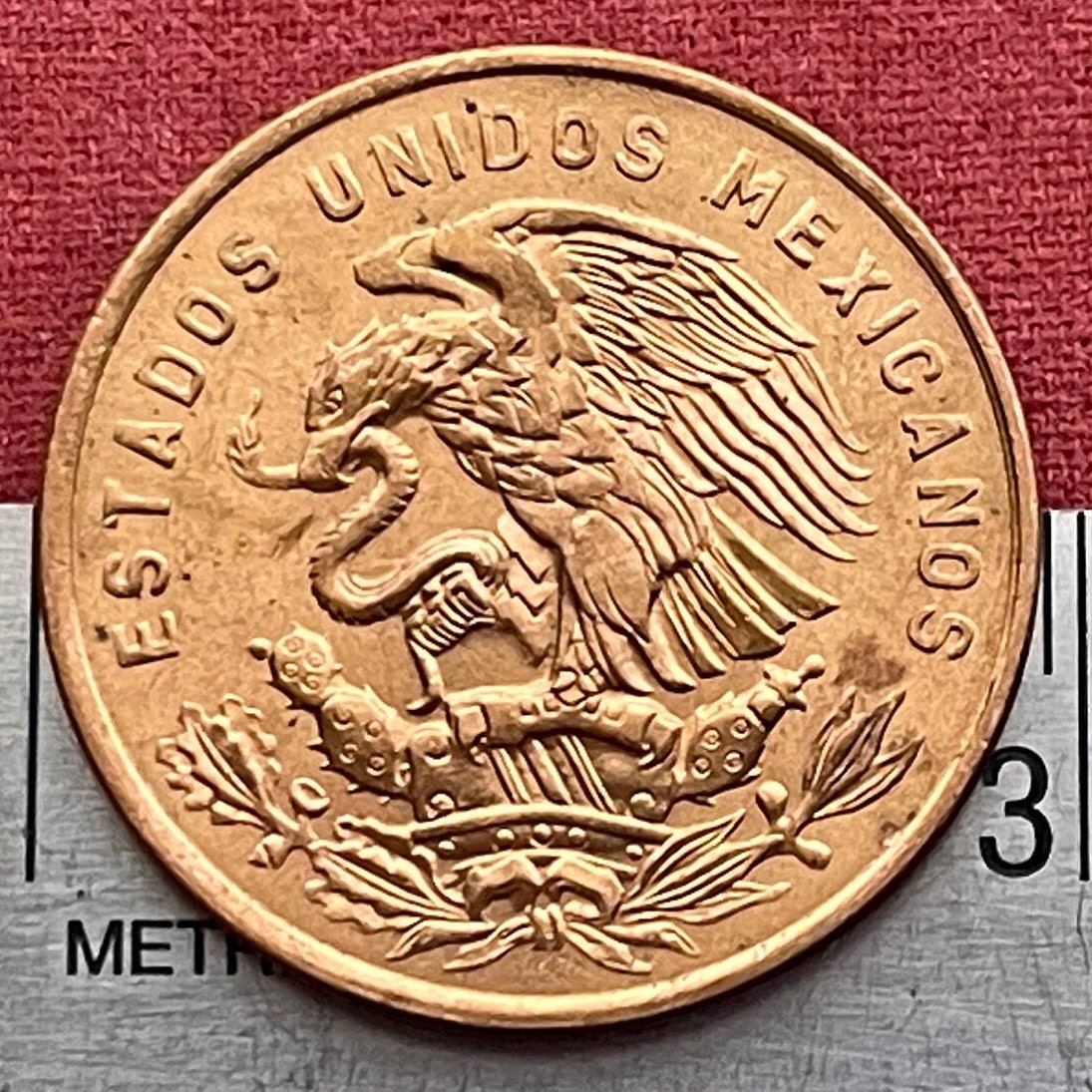
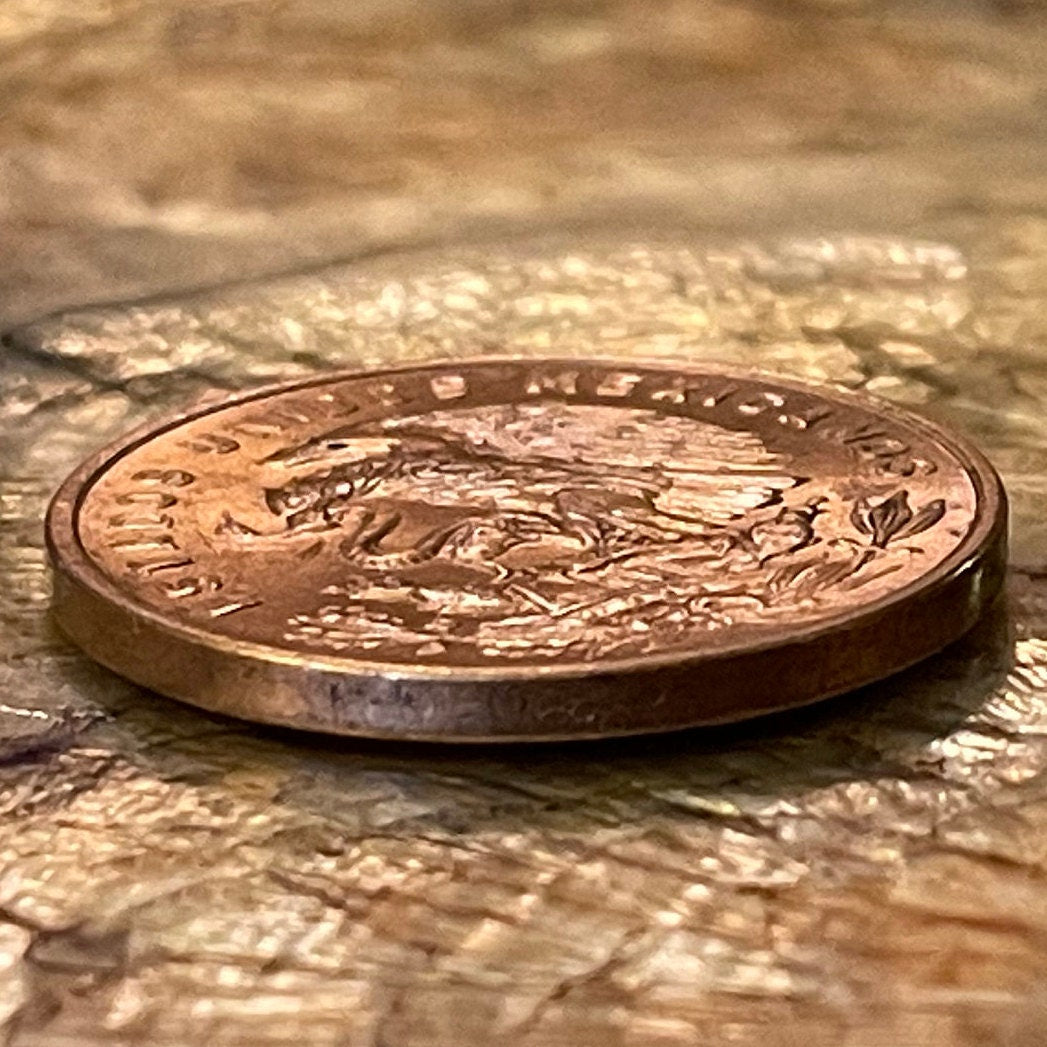
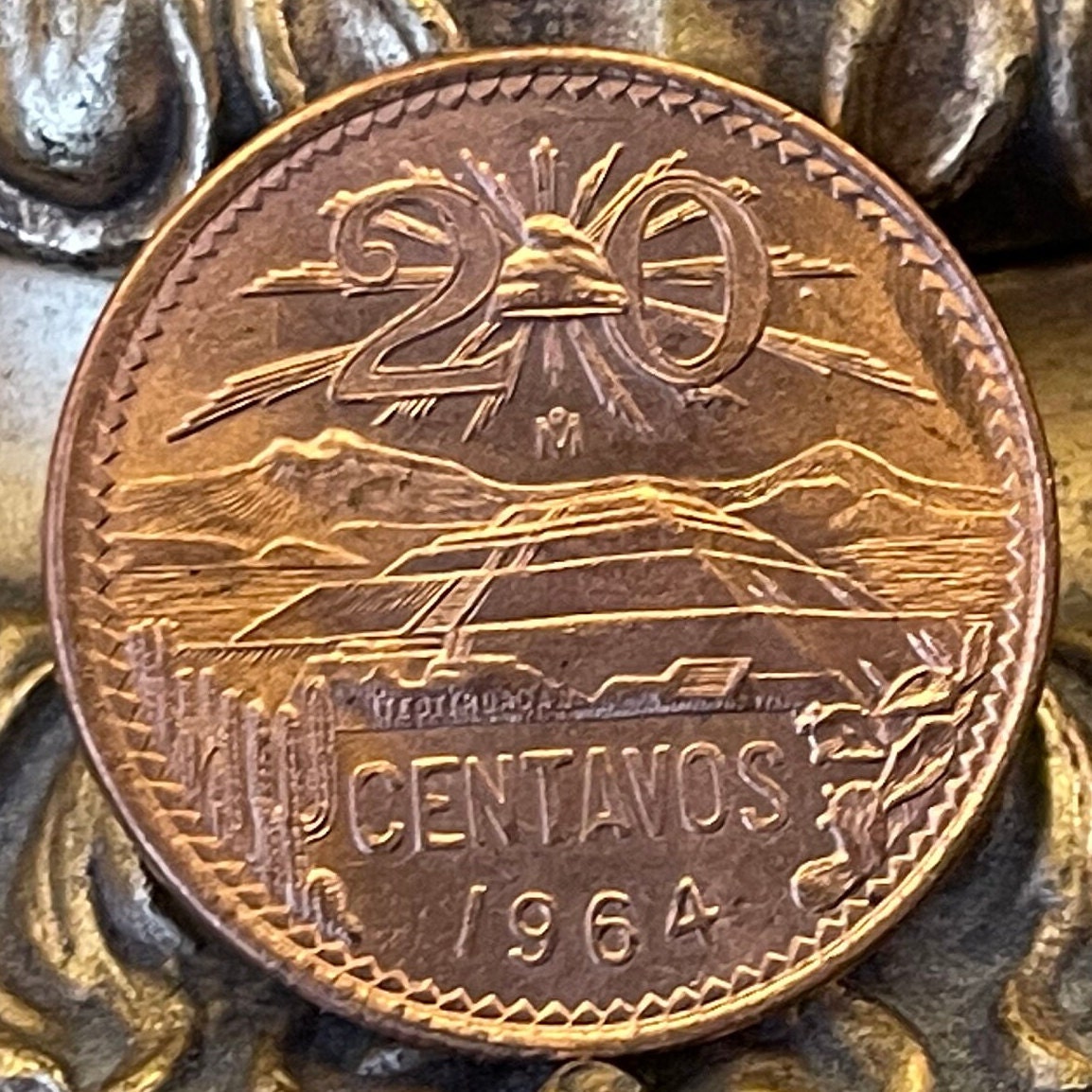
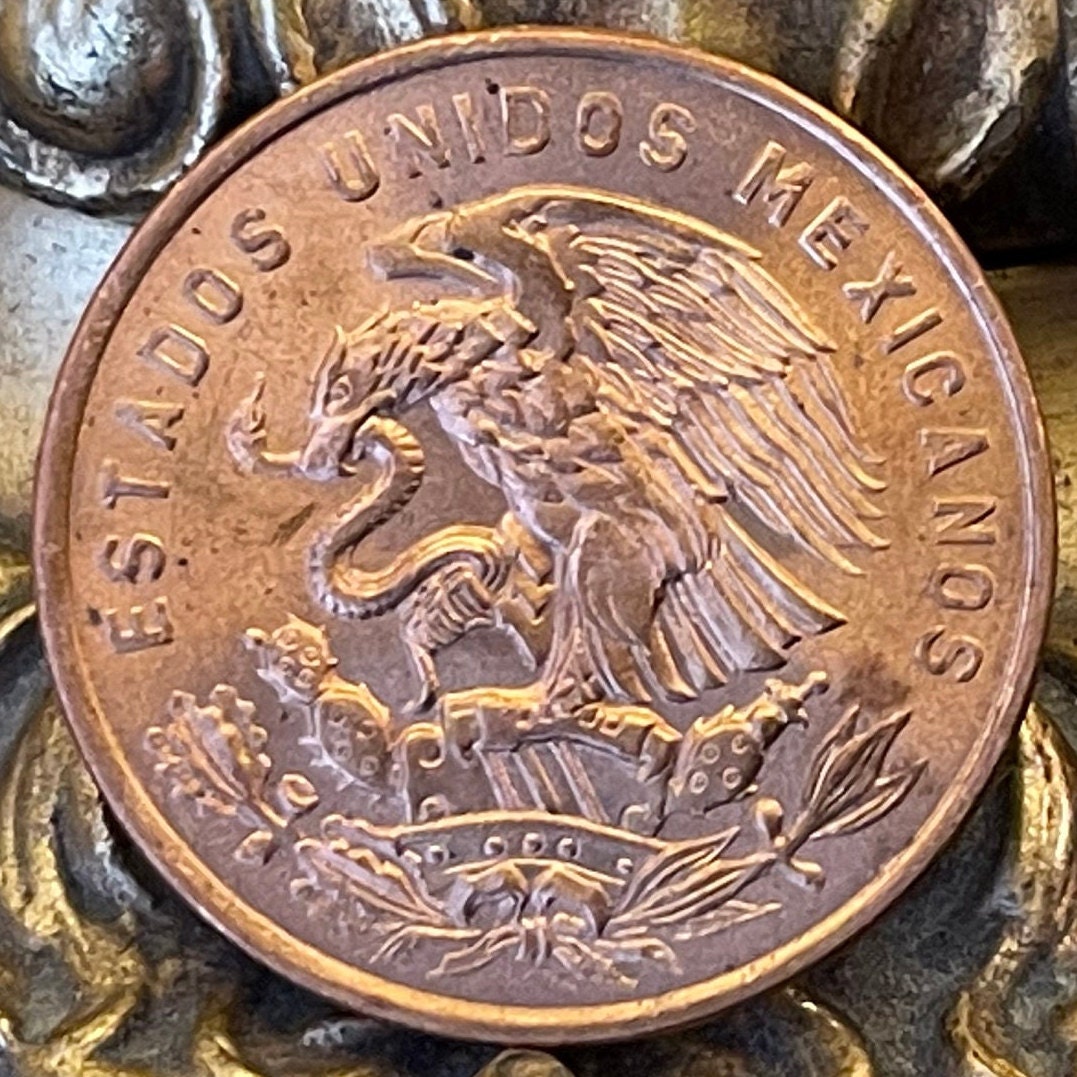
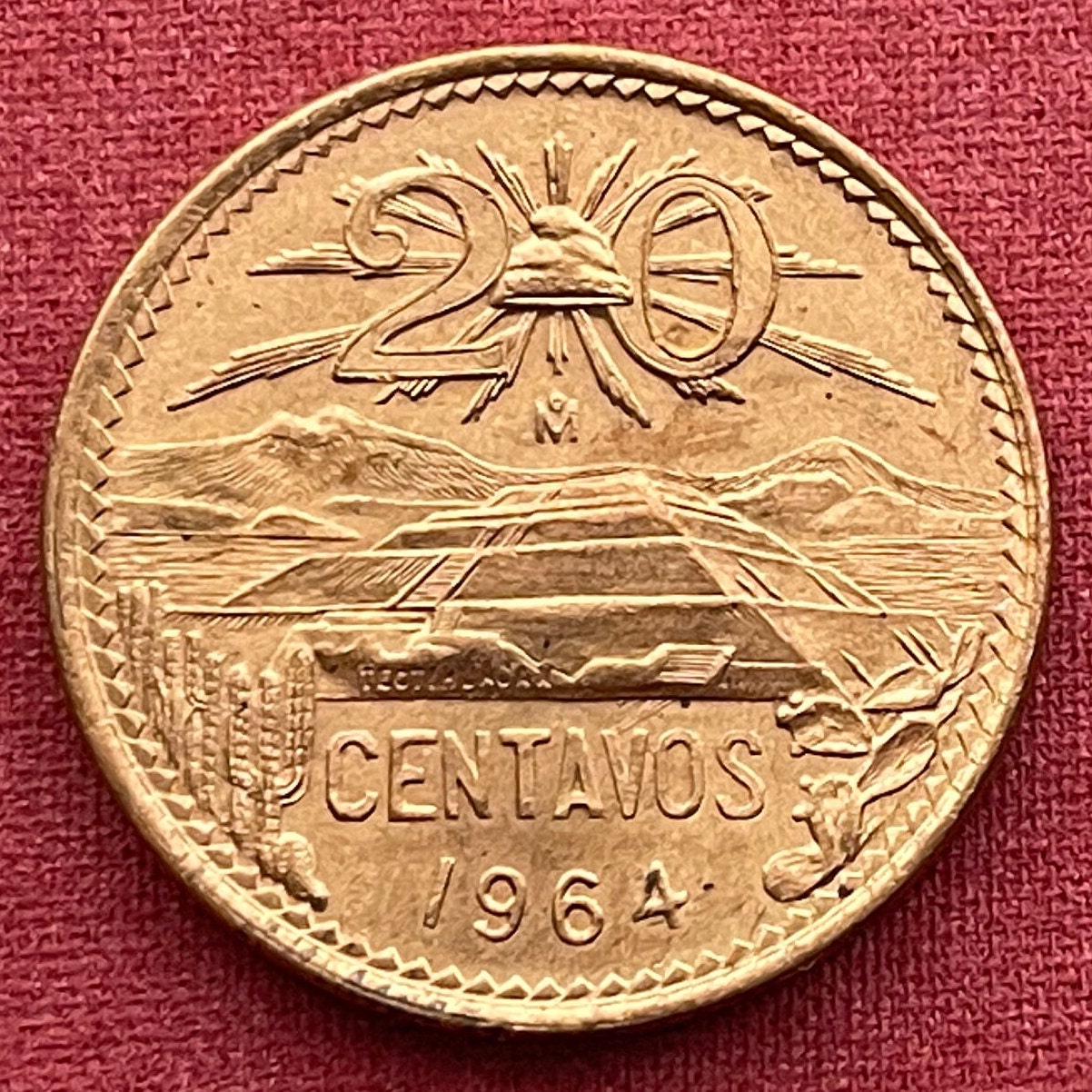
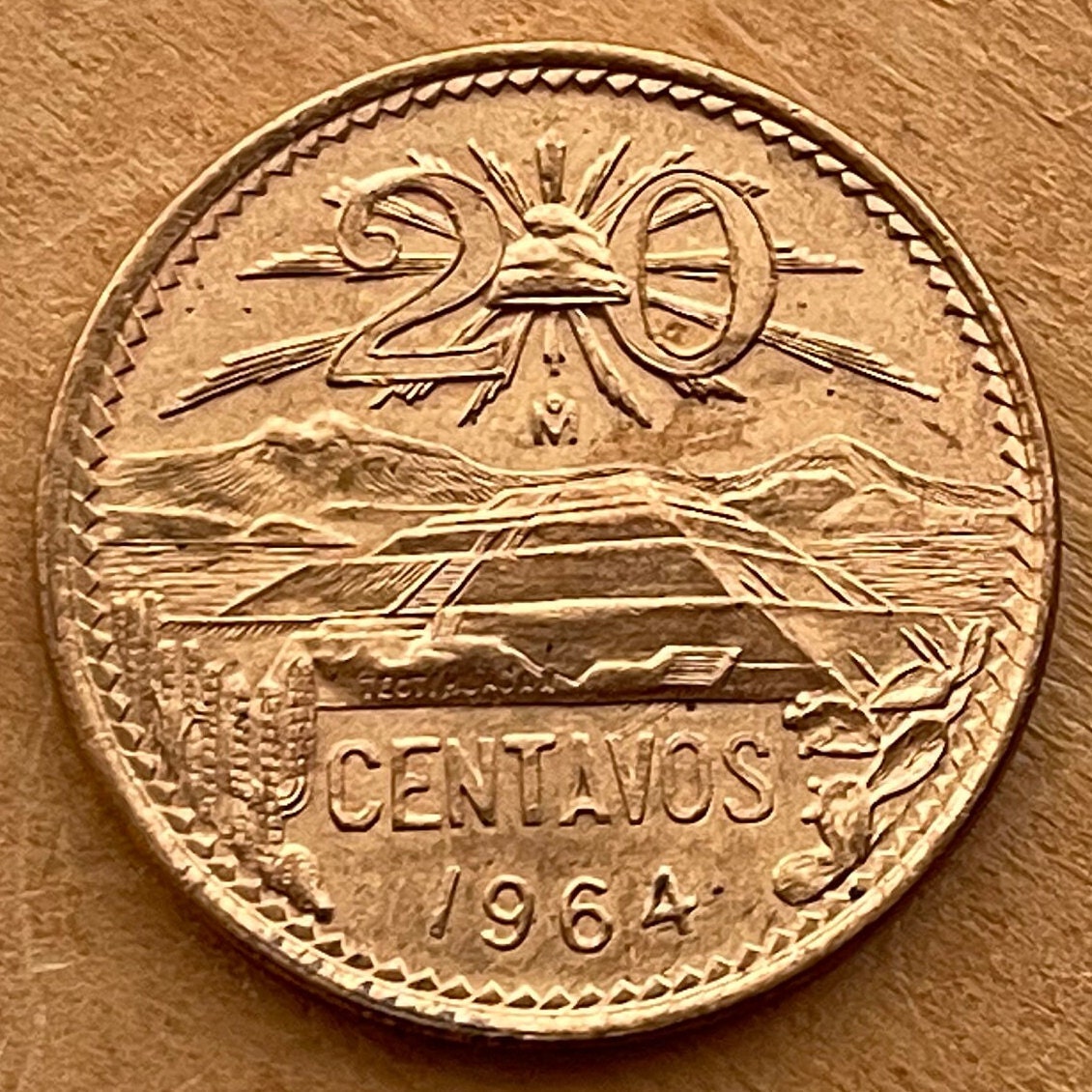
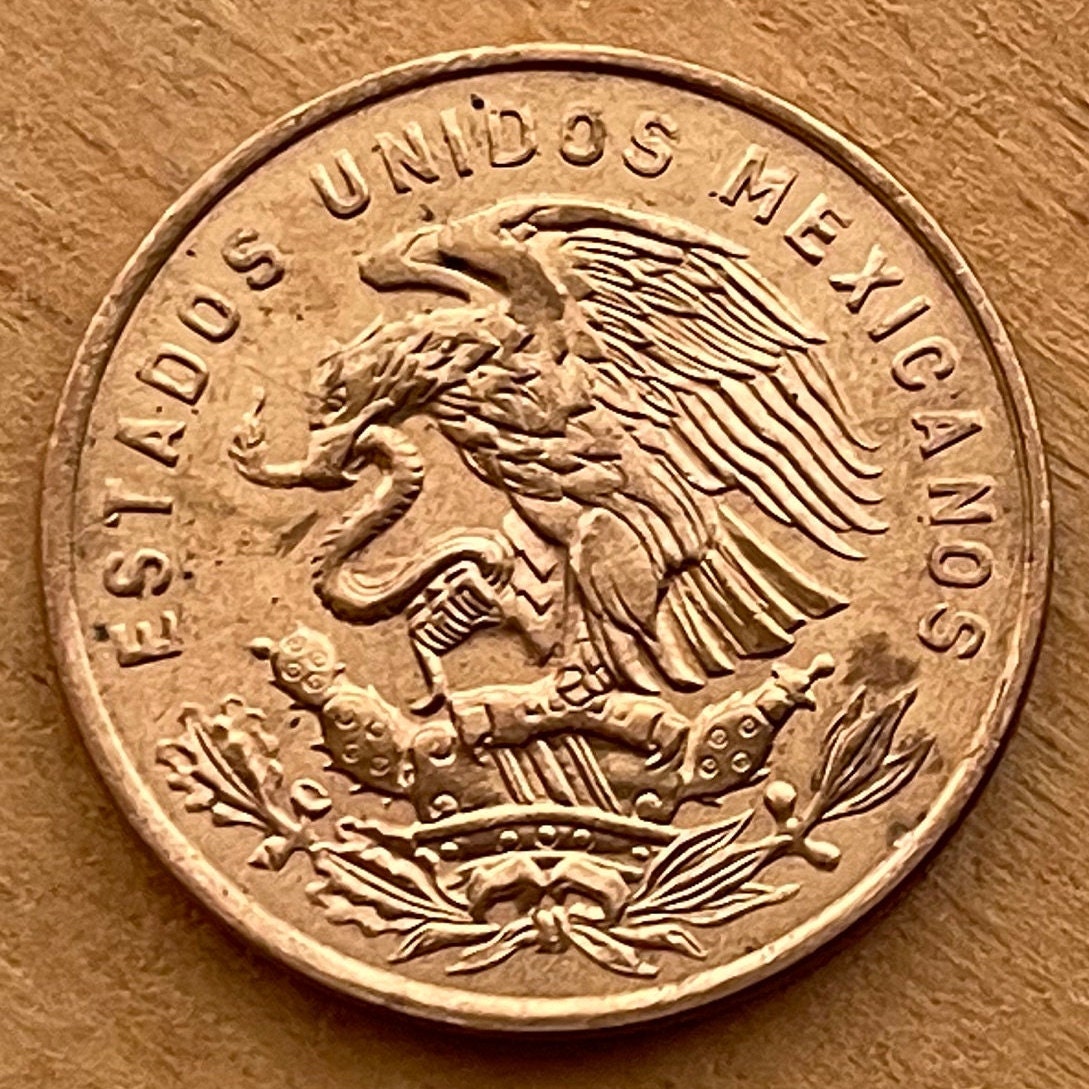
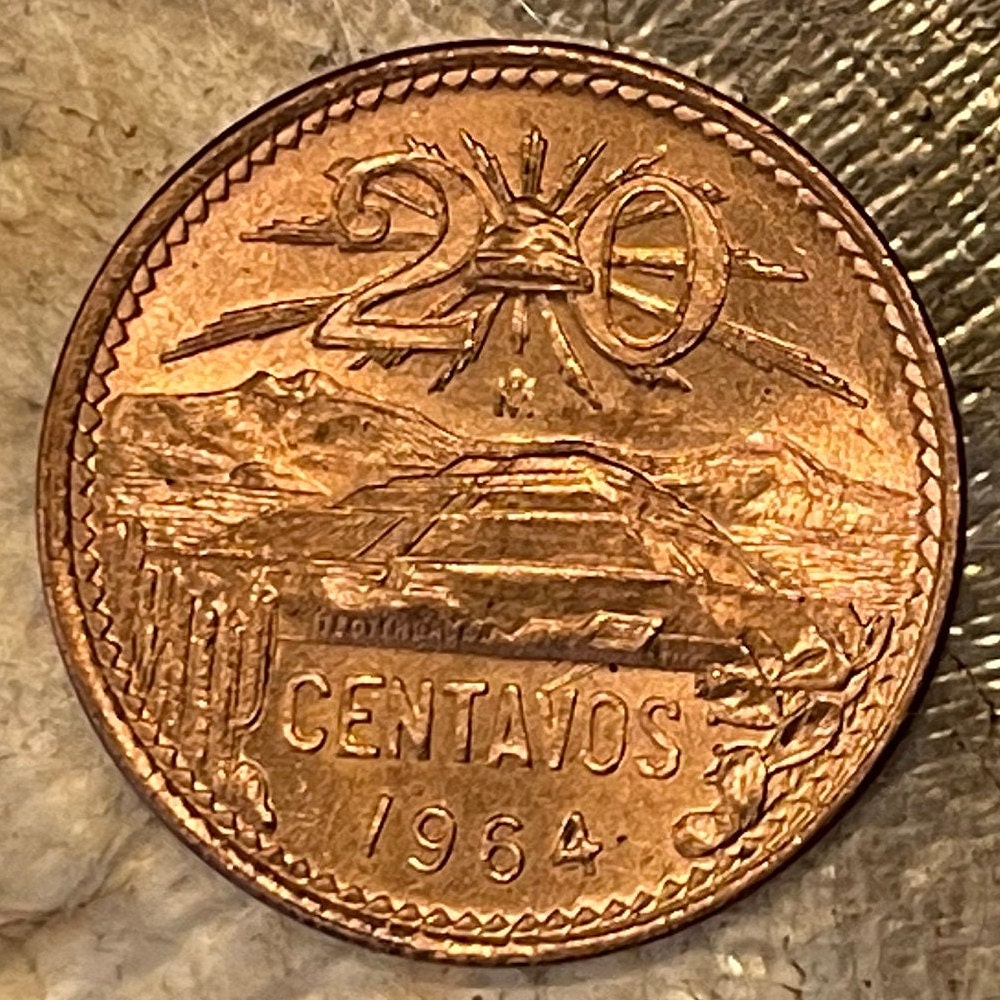
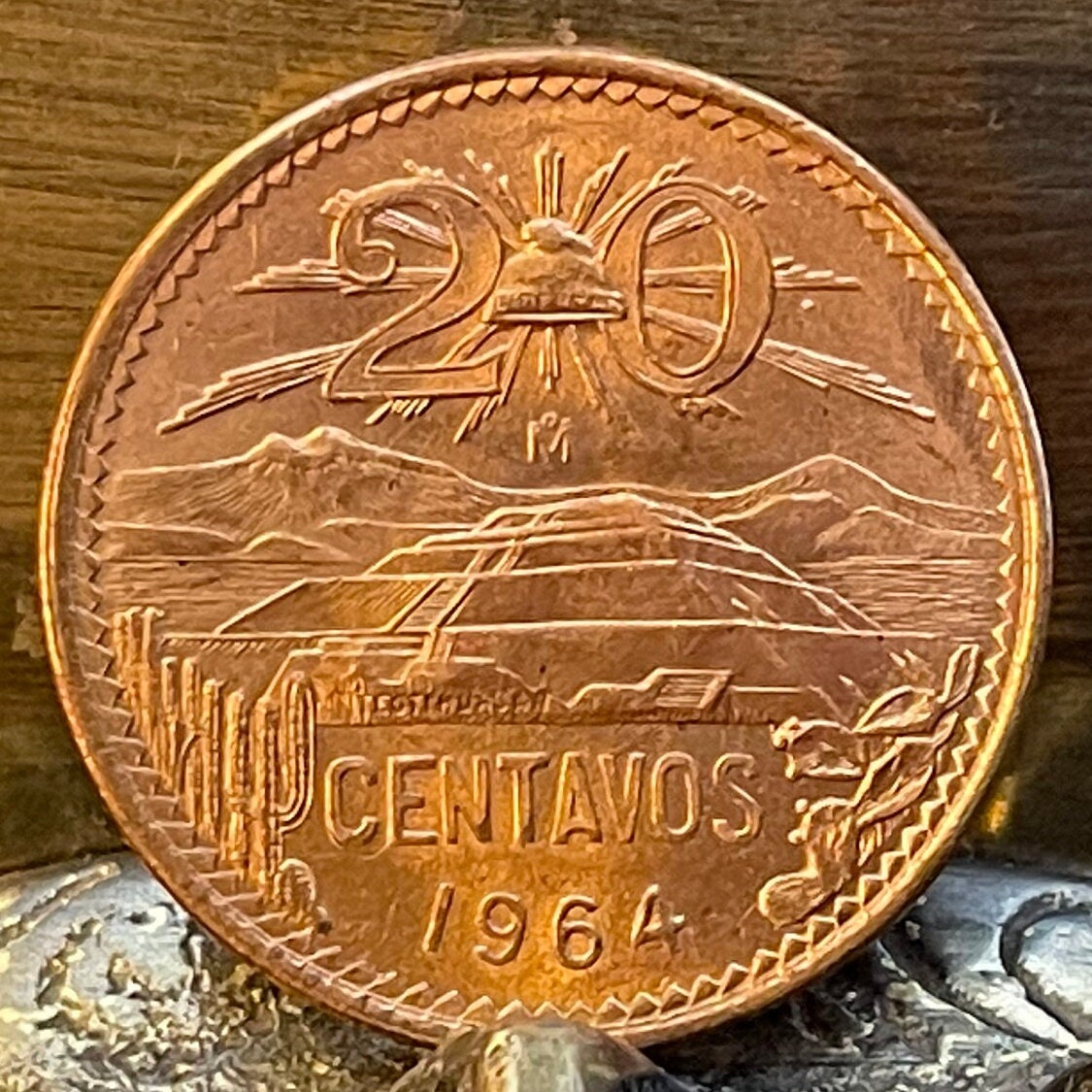
A positive experience! The coin arrived promptly and in great condition.
Very nice Mexican coins just ass described. Well packaged and fast delivery. Thank You
Just what I wanted and arrived on time.
I got my coin very nice and I will be buying from this will be going in my quick collection
Still the best coin shop to buy from. I have loved every coin I have bought here. I will be purchasing more coins from this vendor. Love this coin!









